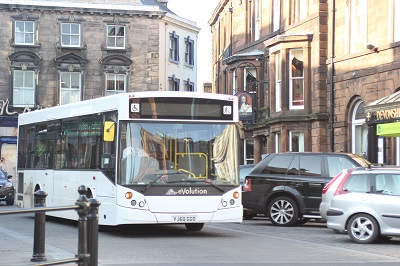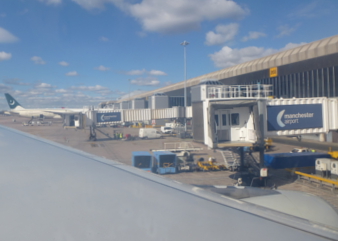
Getting around from day to day and going on holiday make up a huge chunk of most people's carbon footprint.
Follow our tips below for sustainable tourism and travel, and reduce your carbon footprint from the trips you make, whether at home or away.

Your car
When it’s time to change your car, go shopping with carbon emissions in mind.
An electric car is the top choice here. More people than ever before are now making the shift to electric vehicles – both cars and vans. The infrastructure to support them, including chargepoints, is rapidly growing. As well as saving money on fuel compared to a petrol or diesel vehicle, you’ll also save on maintenance costs. They are more expensive to buy than their petrol/diesel equivalents, but you should save in the long run. There’s a growing secondhand market, too, so you’re not limited to buying a new vehicle. The Fully Charged Show on YouTube is one of many great resources for finding out more about these very clever vehicles. For anyone who likes to really get into the detail, Plug Life Television on YouTube is superb.
The next best option is a hybrid vehicle, which uses both petrol/diesel and electric.
Otherwise, if you’re going for a petrol/diesel vehicle, choose one with low emissions. Newer and smaller cars tend to have lower emissions, but check the manufacturer’s website because it’s not always that simple! Lower emissions often mean better fuel economy, so you’ll save money on your fuel bills, too.
Smart driving tips
The way you drive can also affect your fuel economy and therefore your emissions.
Holidays & travel
 Holidays can make up a big chunk of your personal carbon footprint. In fact, tourism overall accounts for about 8% of the world’s carbon emissions.
Holidays can make up a big chunk of your personal carbon footprint. In fact, tourism overall accounts for about 8% of the world’s carbon emissions.
It’s a game of two halves:
- How you get to your holiday destination
- Where you stay and what you do when you’re there
Most of your holiday’s carbon footprint comes from getting there.
OK, let’s get the obvious one out of the way first… flights. They are the biggie when it comes to your environmental impact. A return flight from London to New York could make up almost a quarter of the average person’s annual emissions.
The answer isn’t to take more short flights instead. They produce more CO2 per mile, because of the amount of fuel used for taxi-ing, take-off and landing.
Aviation is becoming a lot more energy efficient, but the fact remains… if you really want to take a bite out of your carbon emissions, take fewer flights.
If you really want to compare the carbon footprint of an overland journey versus a flight, it’s a bit tricky. And you’d have to decide whether you include hotel nights and other incidentals that an overland journey might require, for example. We haven’t found any online tools that would help, but there’s a good article about this on the Seat61 website: Trains vs Planes.
Over land & sea
So, how do you get there, if not by plane? Look into train, coach and ferry options instead. One of the best websites for researching long-distance train travel has to be www.seat61.com. For coaches across Europe, try Eurolines and Flixbus. Coaches tend to be cheaper than trains.
Driving will have a higher environmental impact than going by public transport, but it’s still better than flying, especially if you factor in the other environmental impacts of high-altitude emissions as well as the direct CO2 emissions.
There’s no getting away from the fact that flying will generally be the least expensive and quickest option, when you factor in possible hotel nights for coach, train or car travel (especially for us setting off from Cumbria). Prepare to wrestle with your conscience!
Car sharing
Could you ditch your car altogether and hire one when you need it?
The Co-wheels car club has vehicles available in Penrith, Windermere and Kendal.
Lift sharing
You could actively look for people to share journeys with.
- Ask around at work. You might find a colleague to share all or part of your journey.
- Ask around in your village. You could even put up a poster on village noticeboards. Your local paper or parish newsletter might have a section for lifts offered or wanted.
- Try the Liftshare website. You might find someone offering a lift, or list your journey.
Community transport
You might be able to take advantage of the community transport schemes run by Cumbria County Council. Find out more
Also see:
Voluntary Social Car Scheme
Rural Wheels
Public transport
Hmmm… this can be a tricky one for many of us in our rural county.
There isn’t always a public transport option for getting around and commuting to work. But have you checked lately? You might be surprised at the options that do exist and it may be possible to use them for some of your journeys.
Cycling & walking
Cumbria’s well known for the fantastic leisure cycling and walking opportunities that our amazing landscape offers.
Visit the Sustrans site for walking and cycling routes around the county
Away from the network of walking and cycling routes, though, it can be trickier to avoid busy roads and many of our rural roads don’t have footpaths for walkers.
The Cycling UK website has a super journey planner. After putting in your starting point and destination, you can choose the fastest, quietest or most balanced route and it will even tell you how much you’ve saved in CO2 emissions!
Make fewer journeys
Technology has made it easier to cut out some journeys.
Working from home and working remotely are more feasible now, thanks to better internet access in Cumbria and readily available tools for video conferencing, for example.
